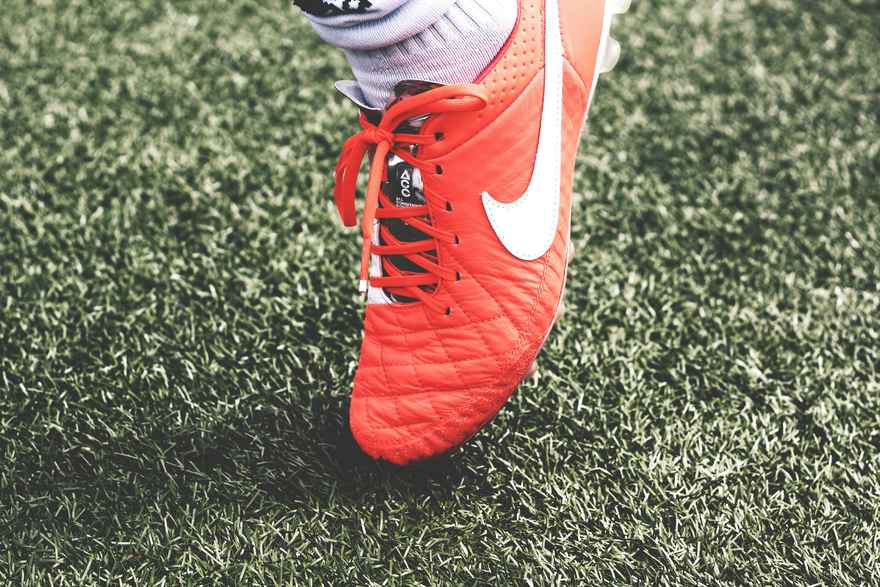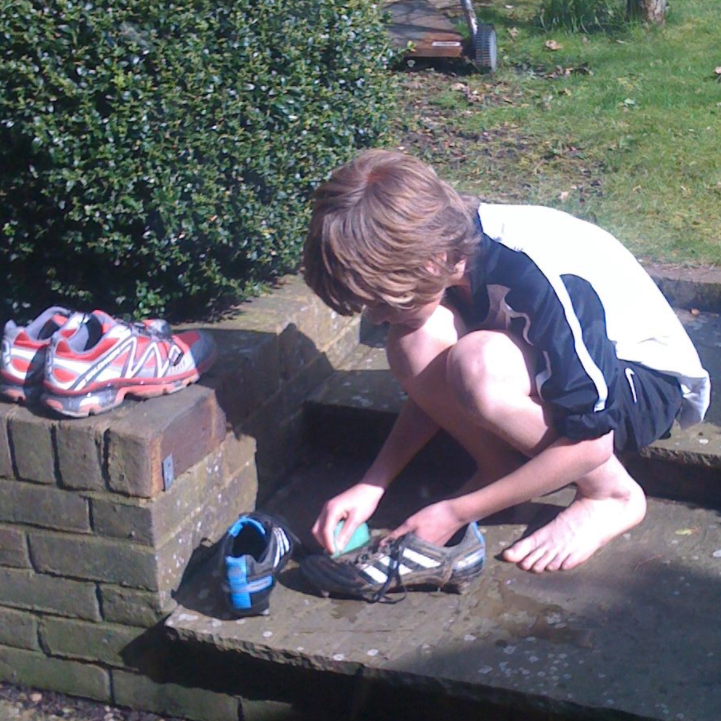Let's Talk About Kit

When a child starts out in sports, their ‘kit’ will pretty much consist of some cheap trainers, the first pair of shorts, and the T-shirt they (or their parents) can lay their hands on. If your child is primary school age or maybe year 7, the chances are you might get away with this simplicity for a while. Our advice: make the most of this stage!
The Social Pressures
Sports environments provide young people with many positive and valuable healthy influences that can ultimately shape their views of health and fitness and, importantly, confidence in their abilities and bodies. As parents, we have the ability to encourage and facilitate these immensely valuable and potentially life-changing opportunities. Ensuring that they are happy within this environment will be essential.
Feeling that they belong and fit in is especially important for teenagers who, by this time, are forming their own identities, often based on those around them. Being ‘accepted’ by others is absolutely crucial for their happiness. For this reason, wanting to look like (or better than) everyone else suddenly becomes important after years of not seeming to care. In psychological terms, this is called 'social comparison' and, at this age especially, how they believe they are seen compared to others can really, REALLY matter.
In teenage sports, kit can literally impact identity, confidence, and whether they feel they belong within the group. This explains why they can suddenly announce that the previously totally okay kit is now, inexplicably, not okay and needs 'urgently' replacing with something ‘better’!
It's safe to say that the sports kit a teenager wears can greatly influence their overall confidence and happiness whilst also creating a feeling of belonging within the sports environment and amongst friends. We should, therefore, try as much as is practically (and financially) possible to go along with their needs during these years and accommodate their requests as best we can. Saying that, it's easy to see how parents can feel under pressure, as it's they who are required to click “BUY” or provide the cash for their child's kit-buying shopping trips.
It can, therefore, be helpful if we try to see the bigger picture. Helping them in their quest to ‘look the part’ is literally helping them to be happy and feel confident both in and outside of their sport, which is arguably one of the most valuable contributions a parent can make.

(Joe cleaning one of his many football boots aged ~10 years old.)
Growth Spurts: Our Experience
If your child is anything like mine, keeping up with trends implies that brand logos become weirdly crucial, alongside a need for all kit items to be ‘on-brand’, including (apparently) socks! However, the most challenging and financially painful factor can be teenage growth spurts.
"I'm not going to lie. Now that I'm at the age where I have to buy my own shoes and kit, I have genuine sympathy for what my parents went through when it came to buying my kit and shoes. Sorry, guys."
Joe Fuggle. Founder of The Athlete Place and my son.
Around the age of 9 or 10, Joe’s feet started to grow …. and grow (see photo above), the need for the ‘next size up’ occurring pretty much every 2-3 months!
At this time, he was playing football at a level where it was expected of them to have both standard grass stud boots and 3G/4G artificial grass boots. He had also started athletics, for which he needed trainers and running spikes. During a (very) brief soiree into the high jump, I was also (naively) talked into buying a pair of high jump spikes*! Thankfully, we managed to sell these bright orange beauties on eBay for a decent amount when the short-lived high jump career ended abruptly.
*Moral of that story: Don’t get sucked into the “I need…” scenario until there’s at least some proof that they intend to stick with the event in question for enough time to justify expensive purchases… especially during the feet-growing phase!!
Then, of course, there were school shoes and casual shoes (i.e., going out but ‘won’t be seen dead in school shoes’ shoes). So, that added up to a grand total of SEVEN different items of footwear, with all but the high jump spikes needing to be replaced at every 'next-size-up' stage.

(Joe (middle) and his Tonbridge AC mates before the need to "look cool")
The Financial Implications
To put the above into context:
-
My own son's feet went from small to enormous (11) in a very short space of time.
-
Finances were already stretched.
-
I had two other growing children to also cater for...
As I was a single parent, this seemingly continual financial outlay became problematic, especially as we now needed to travel the country for his competitions, often requiring overnight accommodation.
Looking back, I now realise it's important to strike a balance based on your personal situation and never to feel you’re letting your child down if you can’t provide them with everything they would like. Providing them with what they need is important; if you're doing your best, that's all you can do.
Top Of The Range Footwear
The pressure on us to buy top-of-the-range footwear for our athletes can be huge, and it's easy to feel we are letting them down and/or reducing their chances of success if we don't. But, it's important to understand that for all but the very, very best, the trainers/spikes/boots they wear are almost certainly NOT going to magically provide a world-shocking performance that will suddenly take them to the top of the rankings, no matter the sport.
In fact, it can be incredibly unhelpful for kids to grow up believing that great performances depend on external factors, like shoes... and supplements.
Encouraging them to believe good results come from hard work, commitment to training, a healthy diet, good sleep habits, and a firm "I CAN" mindset will pay dividends going forward, allowing them to focus on factors they can control. Athletes, therefore, learn that their efforts determine performance and improvement.
A Special Note for Parents of Young Runners
The recent arrival on the running scene of the new ‘super-shoes’ has taken parental pressure to a whole new and potentially frightening level when it comes to financial outlay. These top-end shoes are already being seen at youth and junior-level competitions and will inevitably appear to young, impressionable athletes as 'essential' for successful performance.
But... until they get to a level where 100ths and 1000ths of a second become crucial, young athletes DO NOT need these top-of-the-range 'super shoes'... Of course, there will be parents out there who are willing to spend £230+ on a pair of these shoes for their 11-year-old athlete, which sadly puts parents who are not in a position to do this in a very difficult position.
Before falling into the trap of 'following the crowd', it might be worth considering the following:
-
Are you prepared/able to spend this much each and every time your athlete's feet grow?
-
Once they've had one pair, there's little chance they'll willingly switch to cheaper options. Buying that first pair means you'll be committed.
-
Teenagers' feet can grow at staggering rates, meaning you could easily find you'll need to spend £1000+ on 'just' one type of running shoe in a couple of years!
In short, for most, these are just too expensive, and it's sad to see a situation that's now forcing parents down a financially unviable route simply to keep their child happy or to ease their conscience by feeling they are doing the right thing.
Easing the Financial Burden
Many clubs have acknowledged the cost of continually replacing often barely used boots, trainers, spikes, and assorted kit and have set up second-hand kit ‘shops’ on club nights. If your club has not yet established one, suggest that they do. It can be a real game-changer, especially as this ‘super-shoes’ era takes hold.
Some young athletes are reluctant to accept anything other than brand new. This can often be overcome if the pre-owned items have come from another, often older, athlete that they perhaps admire or look up to. This 100% worked for us.
It's, therefore, a really good idea to create a group of like-minded parents who club together and help each other out by passing down outgrown items, possibly in exchange for a small contribution to help cover the replacement cost. This can be a win-win for you all!
Take Home Points
-
Understand that ‘looking the part’ and feeling that they ‘belong’ is seriously important for your child’s overall confidence, especially entering the teenage years.
-
Beware of being pressured into buying an unjustified or unnecessarily expensive kit.
-
Make the most of the club’s second-hand kit shop.
-
If you can, donate unwanted kits or do kit swaps/hand-me-downs, etc, with other parents.
-
NEVER feel you’re letting your child down if you can’t give them exactly what they want. Giving them what they need means you’re doing your best, and that’s what matters.
To go the extra mile to help your child achieve their sporting dreams, check out our
Ultimate Guide To Athlete Parenting
Featuring expert advice and elite athlete insights on nutrition, sleep, psychology, and much more.
VIEW FREE CONTENT BUNDLE or BUY NOW.


0 comments
Leave a comment
Please log in or register to post a comment